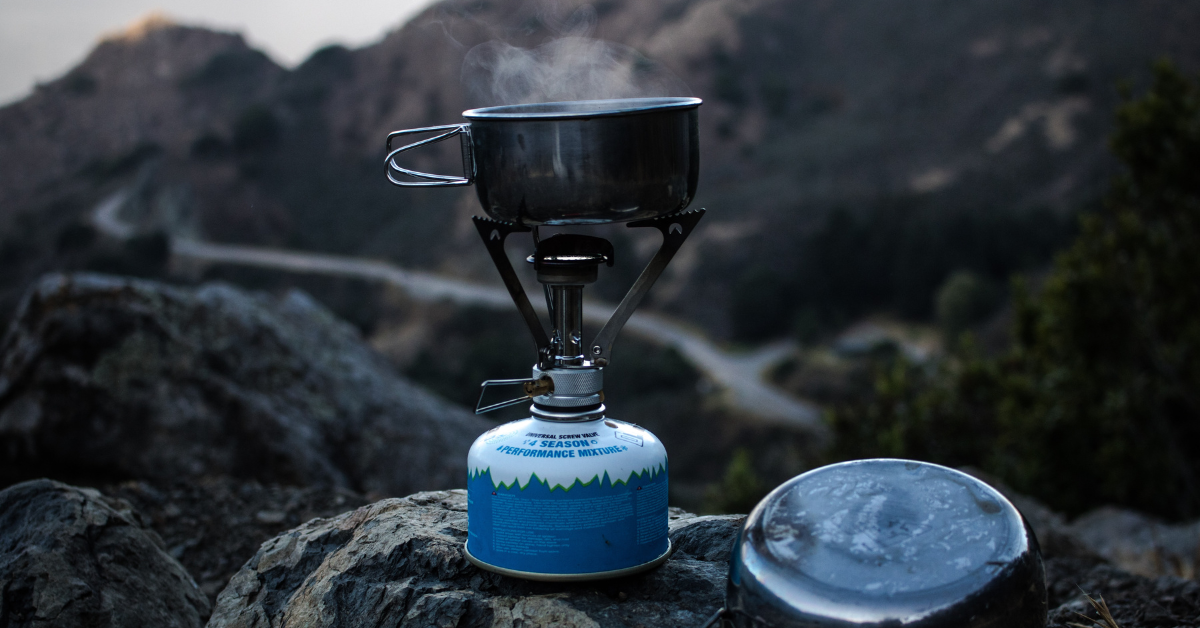Ah, camping. The great outdoors, fresh air, and… well, gas. If you’re an avid camper, you know that a reliable source of fuel is essential for cooking, heating, and powering your appliances. And that’s where camping gas canisters come in. But did you know that proper storage is just as important as having a full tank?
When it comes to camping gas canisters, safety should always be your top priority. A little bit of forethought and planning can go a long way in avoiding potential disasters. With that in mind, in this blog post, we’ll cover everything you need to know about storing camping gas canisters, from the different types available to the best storage practices. So grab a cup of coffee (or a hot cup of tea, if that’s your thing), and let’s get started.
How Do You Store Camping Gas Canisters?
To store ensure safe and convenient storage of your camping gas canisters, consider using a storage solution, such as a specially designed canister holder, a padded carrying case, or a DIY solution. Also remember to store the canisters in a cool, dry place away from direct sunlight & heat sources and keep canisters upright with the valve pointing upward. Keep away from flammable materials to prevent fire or explosion in the event of a leak.
But this is too simplistic an answer to such an important question. Let’s delve a little deeper and help ensure your safety as well as the reliability of your camping gas canisters.
Types of Camping Gas Canisters
Camping gas canisters come in a variety of forms, and it’s important to know the differences between them. The three main types are Butane, Propane, and a mix of the two.
1. Butane
Butane is a lighter gas that is commonly used in portable stoves and lanterns. It’s easy to find and relatively inexpensive, making it a popular choice among campers. However, it doesn’t perform well in colder temperatures and has a low vapor pressure, which means it can be difficult to regulate the flame and maintain a consistent temperature when cooking.
That said, butane is a great option for camping in warm weather or for use in small appliances like handheld stoves and lanterns.
2. Propane
Propane, on the other hand, is a heavier gas that is more suitable for use in extreme temperatures. It has a higher vapor pressure than butane, which makes it easier to regulate the flame and maintain a consistent temperature when cooking. Propane is also a great option for use in larger appliances like grills and camping heaters.
It’s a bit pricier than butane, but it’s worth the investment if you’re camping in harsh weather conditions or using larger appliances. Additionally, propane canisters are refillable, so you can save money in the long run by investing in a refillable tank.
3. A Combo
Finally, there’s a mix of butane and propane, which combines the best of both worlds. These canisters offer a good balance of performance and cost-effectiveness, making them a popular choice among campers. This type of canister can perform well in a range of temperatures, making it a versatile option for camping in a variety of conditions.
However, it’s important to note that the mix of butane and propane may not perform as well in extremely cold temperatures as pure propane canisters.
So, which type of camping gas canister is right for you? That depends on your needs, budget, and the conditions you’ll be camping in. Be sure to do your research and choose the type that’s best for you and your camping adventures. This brings us to the next section. Depending on the type of gas canister you own, below are the factors you’ll need to consider.
Factors to Consider When Storing Camping Gas Canisters
So, you’re convinced that storing your camping gas canisters safely is a top priority. But what else should you consider when it comes to storage? Here are a few key factors to keep in mind:
1. Space
How much storage space do you have available for your camping gas canisters? If you’re camping with a group, you may need to bring multiple canisters to ensure everyone has access to heat and light. Consider the size and number of canisters you’ll need and make sure you have enough storage space to accommodate them.
You can opt for compact and stackable storage containers that take up minimal space and make it easy to keep your canisters organized.
2. Durability
Will your camping gas canisters be exposed to rough terrain or harsh weather conditions during transport or storage? If so, consider investing in durable storage containers or carrying cases that can withstand the elements.
Look for containers made from sturdy materials, such as polycarbonate or hard-wearing plastic, to ensure your canisters are protected from bumps and scratches. Additionally, you may want to consider containers with reinforced corners and padded interiors for extra protection.
3. Accessibility
Do you need to be able to quickly and easily access your camping gas canisters during your trip? Consider the location of your storage space and make sure you can reach the canisters without difficulty. You may also want to consider investing in a storage solution that makes it easy to organize and keep track of your canisters.
For example, you could opt for containers with clear lids that make it easy to see what’s inside, or containers with handles or shoulder straps for easy transport.
4. Cost
What’s your budget for camping gas canister storage? A wide range of storage solutions is available, from simple boxes to high-tech carrying cases. Choose the option that works best for you and your budget. If you’re on a tight budget, you could opt for a simple cardboard box or a reusable shopping bag to store your canisters.
Alternatively, if you’re willing to spend a bit more, you could invest in a high-quality storage solution, such as a padded carrying case or a durable storage container, to keep your canisters safe and secure.
Related: Where Do You Store Camping Gas In Your Home?
5 Ways to Store Camping Gas Canisters

When it comes to storing camping gas canisters, one size definitely does not fit all. Fortunately, there are plenty of storage solutions out there to suit every need and budget. Here are a few options to consider:
1. Canister carriers
If you’re planning on transporting your camping gas canisters to your campsite, a canister carrier is a must-have item. These handy little bags are specifically designed to hold and transport camping gas canisters safely and securely.
Many models come with padded compartments and shoulder straps, making it easy to carry multiple canisters at once.
2. Shelving units
If you have a lot of camping gear and need a storage solution that can handle the load, consider investing in a shelving unit specifically designed for camping gear. These units often feature multiple compartments, hooks, and shelves, allowing you to keep all your gear organized and easily accessible.
Some models even have built-in canister holders, making it easy to keep your camping gas canisters safe and secure.
3. Gas cylinder lockers
If you’re looking for a secure, permanent storage solution for your camping gas canisters, a gas cylinder locker might be just what you need. These heavy-duty units are made from durable materials and are designed to keep your camping gas canisters safe from theft and accidental damage. They’re often wall-mounted, making them easy to install and perfect for use at home or at the campsite.
4. Portable storage containers
If you’re looking for a compact and portable storage solution for your camping gas canisters, consider a portable storage container. These lightweight, collapsible containers are easy to pack and transport, and can be set up in just a few minutes. They’re also great for keeping your camping gas canisters organized and protected while you’re on the road.
5. DIY storage solutions
If you’re handy and love a good DIY project, consider creating your own storage solution for your camping gas canisters. Whether you’re using a repurposed toolbox, an old coffee can, or a wooden crate, the possibilities are endless. With a little creativity and some basic materials, you can create a custom storage solution that’s tailored to your specific needs and budget.
Proper Storage Techniques When Dealing With Camping Gas Canisters
So you’ve got your canisters, you’ve got your storage solution, and you’re ready to hit the road. But wait – have you considered the best way to store your camping gas canisters once you reach your destination? Proper storage techniques are just as important as safe transportation, so let’s dive into some key tips to keep in mind:
1. Keep canisters upright
This may seem like a no-brainer, but it’s essential to store your camping gas canisters in an upright position. This helps to prevent leaks and keeps the canisters in good working order. Plus, it’s just plain easier to access your canisters when they’re not rolling around on their sides.
2. Store in a cool, dry place
Your camping gas canisters should be stored in a cool, dry place to avoid any accidental ignitions. Keep them away from direct sunlight, as well as away from sources of heat and sparks. This means avoiding storage areas near stoves, campfires, and hot engines.
3. Keep away from direct contact with the ground
If your camping gas canisters come into direct contact with the ground, they may become punctured or damaged. To avoid this, consider placing them on a surface that’s off the ground, such as a table or bench. Alternatively, you could invest in a storage solution that keeps your canisters off the ground, such as a shelf or a platform.
4. Avoid stacking heavy items on top
If you’re storing your camping gas canisters in a compact space, it’s important to avoid stacking heavy items on top of the canisters. This could damage the canisters or cause them to leak, which is never a good situation to be in when you’re miles from civilization.
5. Label canisters properly
It’s a good idea to label your camping gas canisters to keep track of the contents. This can be especially helpful if you’re bringing multiple canisters and need to keep track of which one is which.
Consider labeling each canister with the type of fuel it contains, as well as the date it was filled. This information can help you keep track of when it’s time to replace the canisters, as well as what you need to bring on future trips.
